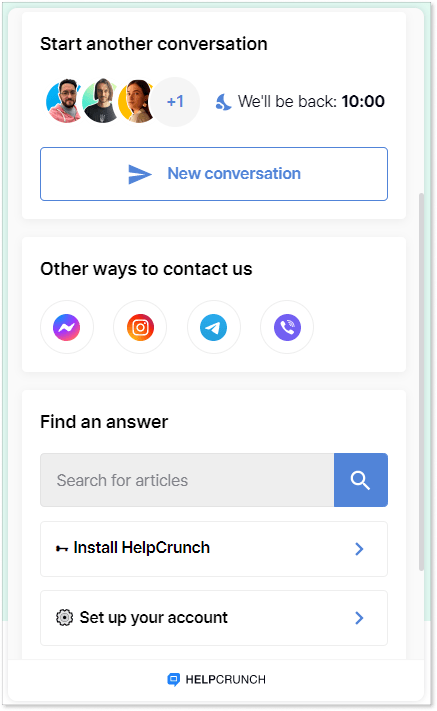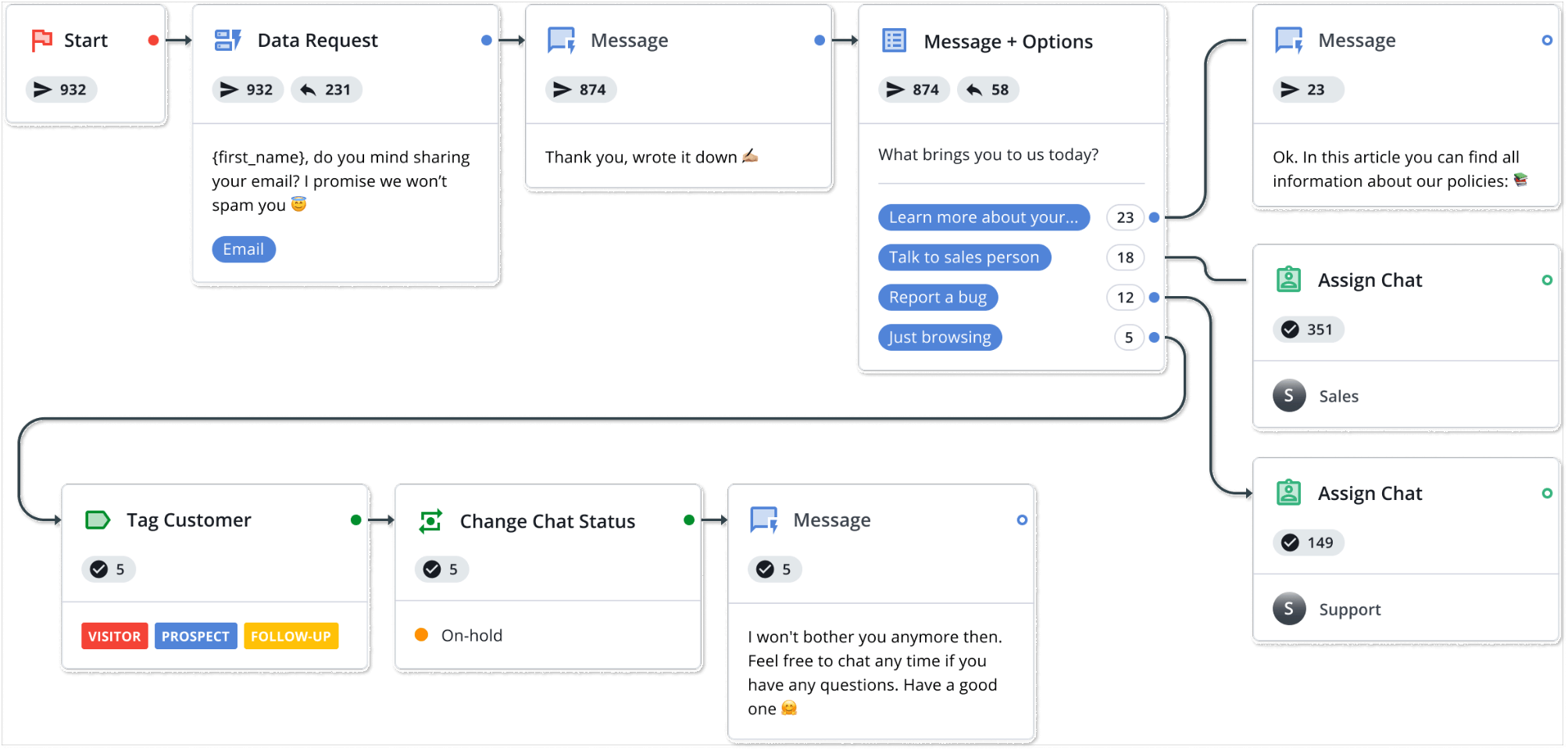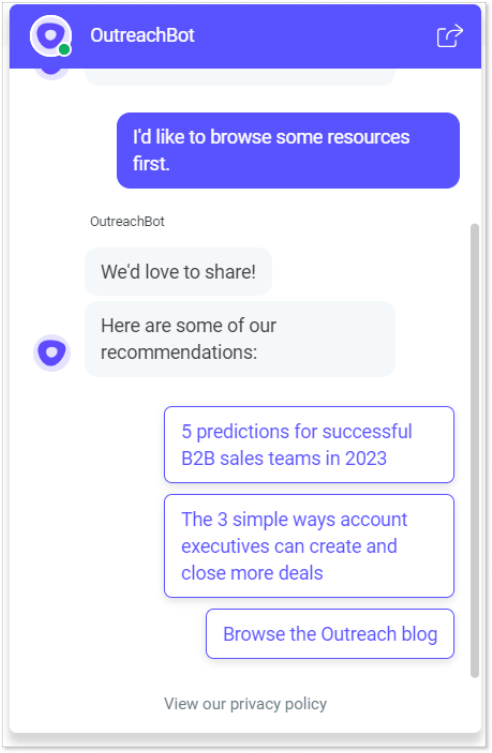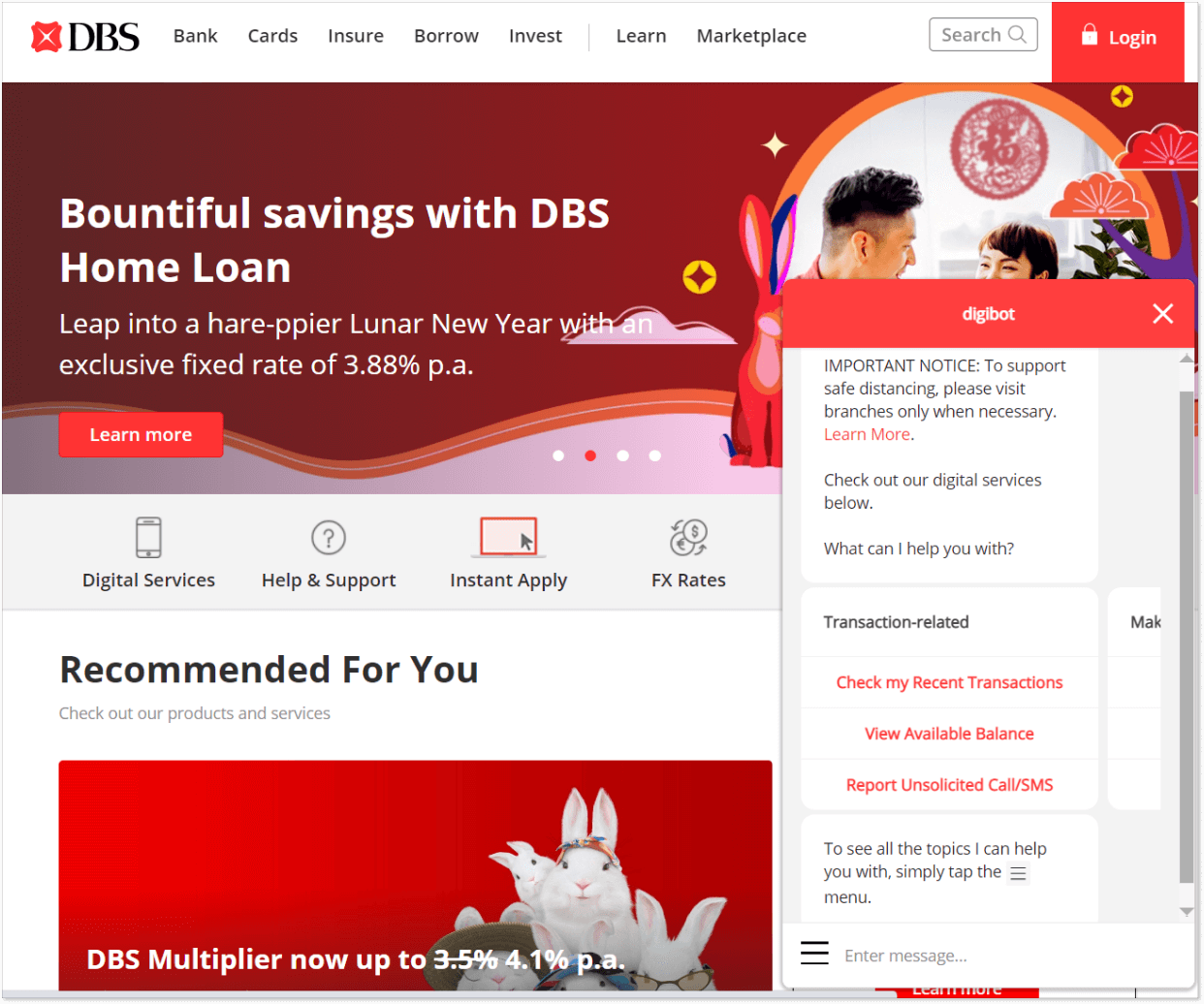Chatbot Best Practices: How to Build a Successful Chatbot in 2024
Find out how to start building a chatbot for your website and boost its performance with these chatbot best practices.
Written by Tetiana Shataieva

It seems that only yesterday chatbots were something new and unusual and today they are everywhere. In fact, 80% of people have interacted with a chatbot on a certain occasion, and that is something to consider.
It seems that the experience users have with chatbots can be generally described as positive. 74% of customers prefer to communicate with a chatbot when they are searching for answers to simple questions.
The market matches this demand by offering an increasing number of chatbots in every industry. If you open a landing page of a bank, a medical clinic, or an online store, you might find a chatbot there. In fact, there are over 300 thousand chatbots on Facebook alone, and it is only one of many platforms you can run your chatbot on.
OK, enough of the figures. If you are here, it means that you either are planning to launch a chatbot or have done that already and want to make the most of it. Either way, I am going to help you on your way with this compelling list of best practices for chatbots.
What are the chatbot best practices that lead to success?
What can you do to set up a chatbot that is both useful for customers and effective for your business? Read on to find out the best chatbot practices in 2024.
Set up the goals for your chatbot
Or, to be more exact, the goals that you want the chatbot to help you achieve. Start with determining the problems that you hope to resolve by implementing a chatbot. This way, you can approach the creation of the bot UI and script from the position of what the bot’s main purpose is and thus make them more effective.
For example, a chatbot can help you with some of the following problems you might be facing:
- High load on the customer service team – the chatbot can take over some easy and repeating inquiries freeing up the agents’ time and energy for more complicated tasks.
- High support costs – when a certain share of customer issues is resolved by a bot, you don’t need to expand the team and invest in training new staff.
- Slow resolution time – chatbots can provide answers to the most popular questions immediately.
- Low customer satisfaction – customers will be happy to get their issues resolved quickly. Moreover, if you include links to your self-service resources, that will increase their satisfaction even more. Statistically, 88% of customers prefer a self-service portal when they have an issue.
At HelpCrunch, for instance, the chatbot hits multiple targets at once. It serves as an out-of-office assistant, suggests other platforms where users can contact the company, and points to the most common knowledge base articles. Chances are that when the team is back in the office, some customers will have found what they needed on their own by browsing the extensive and detailed knowledge base.

Choose the best chatbot solution
When we have set the goals, let’s move on to selecting the type of chatbot you need to implement. There are different types of chatbots, and you can choose one based on the functions and features you need and the budget you plan for it.
For the majority of customer-service solutions, a simple rule-based chatbot should suffice. It is a common type of bot acting by a pre-designed script and responding to the customer’s choice of options.
For more complex use cases, a smart chatbot can serve better. If you are offering healthcare services, you might consider an AI bot that can hold more profound and almost human-like conversations to help and support your patients. Through artificial intelligence, it learns constantly and can provide truly personalized service.
Check out Youper, a mental healthcare service that helps people overcome anxiety, worry, depression, and other issues with therapeutic conversations. This service uses artificial intelligence to support visitors and help them feel more confident and relaxed.
Another aspect of setting up a chatbot is choosing a platform. Again, this depends on the primary purpose and goals of the chatbot:
- Website chatbot. This option is great for improving customer experience, streamlining shopping flows, driving traffic to your website, and relieving the pressure on your support team. A chatbot integrated into your website can become the customer’s guide to your resources and a link to the knowledge base.
- Social media chatbot. You can use a social network, such as Facebook, to run your bot conversations. While being more detached from your website, such a solution gives you the benefit of reaching the social media audience right where they are. Besides, hosting a bot on social media opens personalization opportunities based on the user account details.
Create chatbot scripts
If you have chosen a rule-based chatbot, it’s time to write a script for it. Keeping in mind the goals that you determined, write the entire dialogue flow between the bot and a customer from beginning to end.
Depending on your goal, it can be a lead qualification script, out-of-office script, collection details about issues upfront script, etc.
Try to think of all possible ways the conversation may go starting with the initial contact. What did the customer come for in the first place? Give them a number of options to choose from (bug report/pricing details/feedback/tech question) and build a script for each of them.
In general, your chatbot script should follow some basic rules:
- Design the bot’s personality and stick to it. Introduce the bot and maintain the same language and voice throughout the conversation.
- Use short and clear sentences.
- Offer links to your knowledge base, FAQ page, or blog to encourage self-service.
- Personalize the conversation.
Writing a chatbot script can be fun. You can engage the whole team and brainstorm for all possible dialogue turns. Moreover, nowadays, it requires zero coding or any technical knowledge. Most customer communication platforms include tools to build chatbots. Check, for example, the HelpCrunch chatbot builder where you can write, preview, and edit scripts for all possible customer interaction scenarios.
With HelpCrunch, you can have the chatbot respond with pre-programmed phrases, ask questions, provide links, or assign the chat to a live agent – basically, covering all the main use cases that might occur when chatting with customers.

Bolster the bot with your knowledge base articles
As we’ve seen already, chatbot replies should be brief and concise. However, what can you do if the information the customer needs is larger than the bot can reasonably “digest”? In this case, you can direct the customer to your knowledge base with a link from within the chat.
Depending on your goals and the situation, the links, as well as their placement in the chat, may vary. The chatbot can greet the user with references to the articles containing the most basic and common information: How to get started? How much does it cost? What does the Premium subscription include?
Alternatively, you can place links to the knowledge base somewhere down the conversation flow to enhance the topic. Nowadays, FAQ chatbots intended to answer the most common user questions are becoming popular. Their answers can be supported by links to corresponding KB articles.
As an example, check out Outreach, a sales execution platform. The chatbot asks if you would like to chat or browse some resources. In the latter case, the bot offers several featured articles as well as a link to the company blog. By browsing the knowledge base, the customer may find everything they need without even a word with a human agent.

Make it easy to connect with a live agent
However, sometimes, the chatbot cannot resolve the customer’s issue due to obvious limitations of its functionality. If the problem is too complex or sensitive, human interference may be in order. For such cases, the chatbot should always provide an option to connect with a live agent.
Whenever your chatbot suggests a number of options for a user to choose from, add a speak-to-a-live-agent opportunity as well. Sometimes, the user may be just not in the mood to follow the bot script and want to talk to a human being from the very beginning, so let them. If it helps to create a positive experience, do it.
Design perfect UI
Your chatbot is a part of your brand identity, so it should follow the same style and design principles as the rest of your brand elements. When planning the chatbot, design the whole chatbot landing page rather than an isolated chatbot. It should blend organically with other components, at the same time, attracting customers and inviting them to a conversation.
One more thing – the chatbot window or widget should be visible and easy to find. This feature is intended for getting quick help, so do not make customers search for it. There are several techniques to increase the visibility of your chatbot:
- Make the bot window pop up when the customer lands on your website.
- Animate the icon to attract the customer’s attention.
- Make it “sticky”, that is, staying in the same place when the page is scrolled.
For inspiration, check the landing page of DBS Bank. It supports a chatbot designed in brand colors that can be easily found in the usual place – the bottom right corner of the screen. The bot content is also quite comprehensive – from self-service banking transactions to information articles.

Measure the chatbot performance
To get a complete picture of your chatbot performance, you need to monitor half a dozen metrics showing different aspects of the chatbot use. When analyzed jointly, these metrics will help you understand if the bot you designed and implemented meets your expectations:
- Average number of messages in a conversation. This metric shows how clear the chatbot’s answers are for the customers.
- Number of conversations. Calculated as the number of times users actually opened the chatbot, this figure indicates the demand for chatbot communication.
- Number of engaged conversations. This index shows how many customers decided to continue talking to the chatbot after opening its window and allows you to evaluate the bot’s usefulness.
- Number of missed messages, or messages that the chatbot failed to understand. This metric can suggest where and how you need to improve the chatbot scripts.
- Human takeover rate. This data is useful in evaluating whether the chatbot actually saves your team’s time and effort. If agents need to take over chats too often, it is a sign that the chatbot does not achieve its goals.
- Customer satisfaction rate. At the end of the conversation, offer the customer to rate their experience by assigning stars or choosing an emoji. When you analyze the chat transcripts together with their ratings, you may find some correlations and get improvement ideas.
To monitor all these indices, you usually do not need any special software. Most chatbot platforms include reporting features and allow you always to keep an eye on the bot performance and catch problems early.
The final word
When you came across this article, you already knew that implementing a chatbot is a good idea. Now, I hope, you have some practical action points on how to build it or make it better. So what are you waiting for? Sign up for a 14-day free trial with HelpCrunch and create your own bot in minutes.





